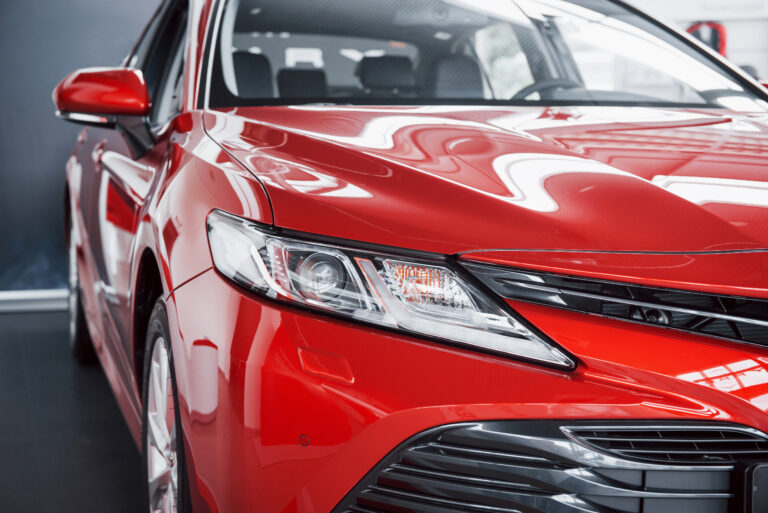
Discover how reliable the McLaren 570S really is. Dive into its performance, ownership costs, and real-world reliability insights.
The McLaren 570S marked a turning point for the brand. Introduced as part of McLaren’s Sports Series, it wasn’t just another supercar—it was designed to be more accessible. With a powerful V8 engine, lightweight carbon fiber tub, and track-focused handling, it promised both performance and practicality.
However, one question continues to linger: How reliable is the McLaren 570S in day-to-day life? Reliability matters even in the world of exotic cars, especially when it comes to ownership satisfaction and long-term usability.
Let’s dig deep into how the McLaren 570S performs beyond the track—on reliability, maintenance, and ownership.
Build Quality and Materials
The first impression of the 570S is its exceptional fit and finish. Everything from the carbon fiber monocoque chassis to the finely stitched Alcantara speaks of precision. McLaren uses high-end components sourced from leading manufacturers, including Bosch electronics and Akebono brakes.
The carbon fiber tub, known as the MonoCell II, not only provides rigidity but also reduces wear and tear on suspension parts by minimizing chassis flex. This contributes directly to long-term reliability.
Yet, some owners report minor creaks and rattles over time, especially in extreme climates. These are mostly cosmetic and not structural, but they remind us that even a McLaren isn’t entirely immune to the real world.
Engine Performance and Longevity
At the heart of the McLaren 570S lies a 3.8-liter twin-turbocharged V8, producing 562 horsepower. It’s derived from the same M838T family used in the more extreme models like the 650S and P1, but slightly detuned for road usability.
This engine is robust and built for high-revving performance. Routine oil changes and premium fuel keep it running efficiently.
Many owners have crossed 40,000+ miles without significant engine issues—a testament to McLaren’s engine reliability. Turbo problems, common in other performance brands, are rare here thanks to high-quality cooling and engineering.
That said, regular maintenance is critical. Miss a service or two, and problems can stack up. Turbo seals, coil packs, or oil leaks can emerge if neglected.
Transmission and Drivetrain Durability
The 570S features a 7-speed dual-clutch transmission (SSG). It shifts quickly and smoothly, offering both manual and automatic modes.
The reliability of this transmission is generally strong. McLaren has fine-tuned it over the years, and it doesn’t suffer from jerky engagement like some rivals.
A few early models reported error codes or gear selection hesitation, but these were mostly software-related and resolved through updates. Clutch wear is minimal if you avoid excessive launch control use.
Differential and drivetrain components are also solid, provided routine checks are done. Regular fluid replacement ensures long-term durability.
Electronics and Infotainment Reliability
This is where McLaren 570S owners are most divided. The infotainment system, IRIS (Infotainment Response Interface System), looks sleek but isn’t perfect.
Touchscreen delays, navigation glitches, and Bluetooth pairing issues are commonly cited. Though not dealbreakers, they affect everyday usability.
That said, recent software updates and dealer interventions have significantly improved the system’s reliability. But compared to rivals like Porsche or Audi, McLaren’s tech still feels a step behind.
The positive? Core electronics like the ECU, sensors, and adaptive suspension control have proven stable. These rarely malfunction when serviced properly.
Common Issues Reported by Owners
While the McLaren 570S is generally reliable, some patterns have emerged in owner communities:
-
Window regulators: Failures or sluggish movement can happen, usually resolved with motor replacement.
-
Sensor errors: ABS, TPMS, or parking sensors may throw warnings. Most are minor and fixed via software resets.
-
Front lift system: Some owners report the nose lift system being inconsistent or failing to engage.
Most of these problems are minor and fixable, but highlight the importance of buying from reputable dealers with full service records.
Maintenance Costs and Intervals
Owning a McLaren is not cheap, but it doesn’t have to be unmanageable.
Basic service includes oil changes, fluid top-ups, filters, and brake inspections. A typical annual service costs between $1,200–$2,000.
Tires and brakes can push costs higher, especially if you drive aggressively or track the car. The carbon-ceramic brakes on some trims are durable but expensive to replace.
Clutch replacement is rare under normal use and can last over 40,000 miles. McLaren recommends servicing the transmission every 5 years or 50,000 miles.
Regular diagnostics and software updates help avoid more costly repairs. Keeping a detailed log of maintenance is essential for resale value and performance.
Dealer and Service Network Experience
A key factor in maintaining the 570S reliably is having access to trained technicians. McLaren’s service network is still growing, but key metropolitan areas have established service centers.
Authorized McLaren dealers offer top-tier service, with diagnostics and factory-trained staff. However, costs may be higher than independent exotic specialists.
Some owners prefer using certified independent service shops to save on routine tasks, especially when warranties expire. It’s a trade-off between cost and peace of mind.
Ownership Experience and Longevity
Many 570S owners praise the car’s ability to serve as both a weekend toy and a regular-use exotic. Unlike the more temperamental supercars of old, the 570S can be driven several times a week with confidence.
The carbon fiber tub helps prevent rust and reduces long-term fatigue. Engine reliability is solid, especially if well-maintained. Electronics, while occasionally frustrating, rarely cause critical failures.
With the right care, the McLaren 570S can easily last 60,000 to 100,000 miles—though most owners part ways long before that due to upgrades or shifting priorities.
Conclusion:
Yes—when properly maintained, the McLaren 570S is one of the more reliable supercars in its class. It blends exotic performance with decent day-to-day usability. While not perfect, its issues are manageable and often software-related.
If you’re considering buying one, choose a well-serviced example and invest in consistent care. In return, the 570S will offer the thrill of a lifetime with fewer headaches than many rivals in its league.
Whether you’re carving corners or cruising to dinner, the McLaren 570S proves that performance and reliability can indeed go hand in hand.
FAQs
1. Is the McLaren 570S reliable for daily use?
Yes, many owners use it a few times a week or even daily. Regular maintenance ensures consistent performance.
2. Are McLaren 570S repair costs high?
Compared to mainstream cars, yes. But for a supercar, it’s competitive. Annual service ranges from $1,200 to $2,000.
3. What are the common McLaren 570S problems?
Minor electrical bugs, window regulators, and infotainment lag are the most reported. Mechanical issues are rare with proper maintenance.
4. How long can the McLaren 570S engine last?
With regular servicing, the 3.8L twin-turbo V8 can last over 60,000–100,000 miles without major issues.
5. Is the McLaren 570S more reliable than the Ferrari or the Lamborghini?
It’s generally considered more dependable than older Ferraris and comparable to modern Lamborghinis in terms of reliability.



